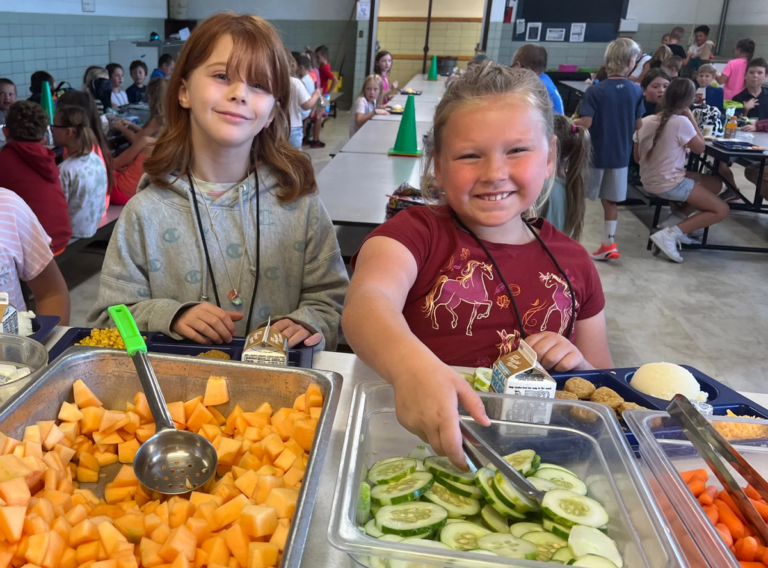Students are back in the classroom — and school breakfast and lunch are now free in many states.
Michigan, Minnesota and Colorado are among six states implementing free universal lunches this year, while several other Midwestern states are taking more gradual steps to expand food access to students. It's a change happening across the country as students, parents and school districts get used to free school lunches during the COVID pandemic.
Carrie Link is the child nutrition supervisor for the Colorado Department of Education. He says when the federal waivers expired last June, participation plummeted.
“During the 2021-22 school year, schools in Colorado served just over 100 million waived meals nationwide,” he said. “Last school year, when things got back to normal, we saw a drop in meals to about 76 million.”
Last fall, Colorado voters approved the Healthy School Lunches for All program, and Link expects the number of meals to return to pandemic-era levels.
In Minnesota, districts are already reporting a 15 percent increase in meal participation compared to last year after implementing a universal free lunch program at the beginning of the year.
Emily Honer, director of nutrition program services at the Minnesota Department of Education, said while it's early in the school year, there has been a clear impact.
“That really showed us how necessary this program is,” he said. “When we were able to provide the meals for free, the students came and the students ate the meals because they needed it.”
Families nationwide have racked up nearly $20 million in school meal debt since universal free lunch ended. report were found. That doesn't surprise Crystal FitzSimons, the director of school and after-school programs for the Food Research and Action Center.
“School meals debt came back with a vengeance last school year. And it's because families didn't realize they had to pay, they didn't realize they had to fill out an application for school meals,” he said.
The end of the program also coincided with food inflation and higher housing costs, putting further pressure on families.
“There's so much pressure on families to make ends meet,” FitzSimons said.
“We can't afford it”
School districts in many parts of the country struggle to offer free lunches, even though many of their students qualify for free or reduced lunches under federal rules.
The entire rural school district of Amboy, Illinois is eligible for free lunches through the federal community eligibility provision. That's because more than 40 percent of families in the small area of northern Illinois use federal assistance programs like Medicaid and the Supplemental Nutrition Program.
However, the district expects to lose money by participating in the federal program, Human Resources Director Amy Wittenauer said.
“We can reassess it at the end of the year and say, 'We're just losing too much. We can't afford it,” he said.
Illinois lawmakers are considering more money to support districts like Amboy after passing Free School Lunch for All last spring.
The bill's sponsor, state Rep. Maurice West, D-Rockford, said this fall that he hoped his fellow lawmakers would increase support for the program from $9 million a year to $120 million a year.
“We were spoiled during COVID when it came to funding coming into our states,” West said. “Now we are trying to keep up with the programs we started and we are seeing that they are working. It's just time to redefine our funding as a state (for) what's best for our communities.”
More states are facing a lack of funding for school meal assistance.

